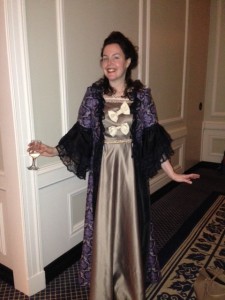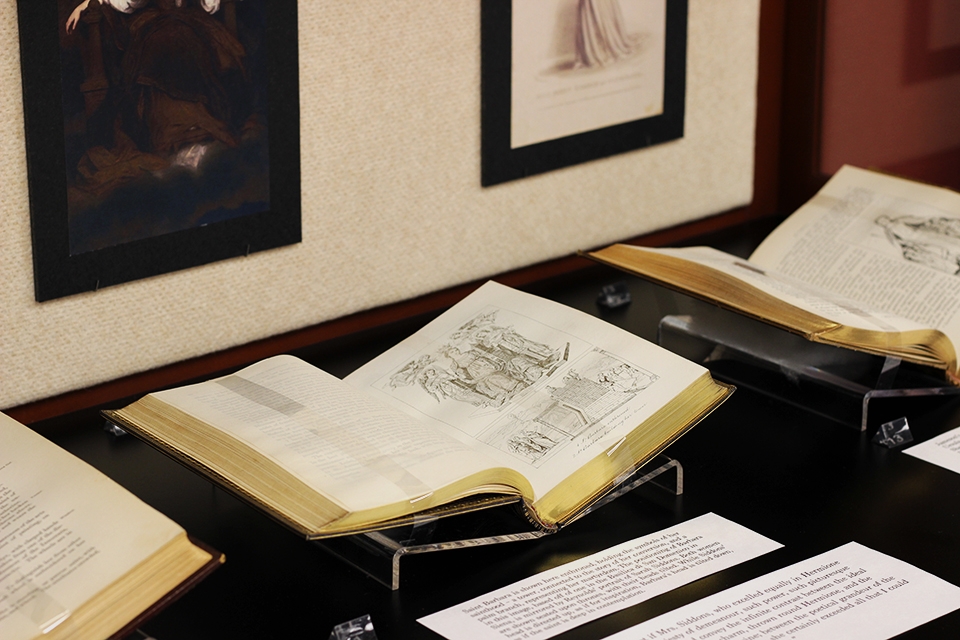

By: Kaye Burnet | The Duquesne Duke
Laura Engel is an Associate Professor of English who specializes in 18th century British literature, with a focus on theater, gender studies, performance studies and material culture.
Q: You’ve recently been published. Could you tell me a little about that?
A: Yes, my new book is called Austen, Actresses, and Accessories: Much Ado About Muffs. Many of my interests are combined in this, since it’s about Austen, literature, theater and the material culture.
Q: I hate to sound ignorant, but could you explain what material culture is?
A: Sure! It’s the study of objects from the past and how they help us piece together and understand the past—the way people lived, what they valued.
Q: So when you say the book is about “muffs”, are we talking about the same thing? The fabric tube where you put one hand in one side and one in the other to keep warm?
A: Yes, but it’s more than that. In 18th century portraits of actresses, they would often be painted with muffs, which symbolized their rise in class and in a way, their sexuality. There are many hilarious cartoons from that time depicting women with muffs, some so huge and oversized that they can hardly lift them. It was a form of expression.
Q: So in studying material culture, what is the most interesting artifact you’ve had the opportunity to hold?
A: Well a lot of my research takes me to museums to look at clothing, jewelry, costumes. But I’d have to say for me, the coolest things is to actually touch the letters and manuscripts of the people I’m researching. To hold a letter written by an actress, maybe written by candlelight, and think, “She actually touched this”.
Q: So a big part of your specialization involves the writings of Jane Austen. In fact, you’ve been to many conventions and lectured about Austen’s world and writings. What are some experiences that stand out to you?
A: Well yes, you could say that in this area I’m the “go-to-girl” when it comes to Austen! If the 20th Century Club in Oakland or the Pittsburgh Jane Austen Society of North America (JASNA) are having an event, I’m often asked to speak. But I’ve been to Austen’s brother’s house in Chawton, England and Jane Austen’s house several times for events, and it’s always interesting to be where she was.
Q: Some people get really involved in Austen, to the point of period costumes and reenactments. Have you witnessed this?
A: Yes — with Austen you really have two groups. You have scholars and Janeites, who are the really dedicated ones, who could probably recite every word of Mansfield Park to you. Probably the strangest talk I ever gave was to the Pittsburgh JASNA and about half the audience was in full period dress. And now Austen is becoming even more popular, with a whole industry springing up—everything from wedding dresses to t-shirts.
Q: Have you ever partaken in reenacting?
A: [Laughs] Yes, there was an 18th century conference and one of my friends thought it would be fun to hold a masquerade ball. We all rented costumes, and it was really funny to see all these well-known scholars playing dress-up. I actually helped a friend of mine into a corset. My costume was this stage costume, and someone came up and said, “Wow, you look just like the actresses you write about!”
Q: You said there was a second book you had published. What was that?
A: It was a collection of essays I edited called, Stage Mothers: Women, Work, and the Theater, 1660- 1850. Many actresses at that time were mothers, so they were professional women who had to balance work and home life. The idea that the working mother is a new concept is just not true. There’s a lot we can learn from them, since there’s an eerie resonance between past and present.



